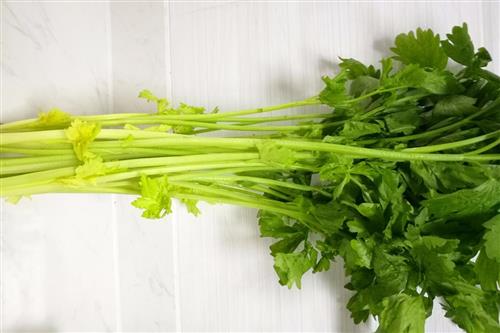What vegetables to eat in March 8 kinds of fresh vegetables delicacies
We often look at seasonal seasonal vegetables and fruits. The seasonal fruits and vegetables are not only expensive but also not fresh. We don't recommend eating because of insufficient nutrients. So what kind of vegetables are eaten in March? One, lettuce Lettuce is regarded as a kind of vegetable for both Chinese and Western people. It can be ripe all year round, but spring is the best. It is not only seasonal vegetables but also the most tender. Lettuce is a lettuce-like vegetable that contains lettuce. Lettuce has a calming and reducing fire effect. The water content of lettuce is very high and its nutrition is very rich. The most prominent feature is low-fat, high-vitamin. Second, leeks In spring wild vegetables, leek is definitely a dazzling star, and its young shoots are eaten as wild vegetables in early spring. Leek has always been a medicine and food of the same vegetables, it is rich in nutrients, and rich in dietary fiber, promote intestinal health at the same time, there are Jianweixiaoshi, eyesight and other effects of blood pressure. In the spring, when the leeks are eaten, they say, "Yangchun Marchdays, leeks and cilantro," says that using dumplings, making spring rolls or sauté with leeks is a very common way of eating. Third, Western cuisine Ningxia Cai is a kind of vegetable with particularly strong reproduction ability. It is rich in vitamins and trace elements. Chinese medicine believes that Western cuisine is sweet and bitter, cold, human lung and bladder. With clear and moist lung, phlegm and cough, diuretic and other effects. It has a refreshing taste and is generally used for soups and soups to make the soup taste more delicious. Four peas At the moment, it is the season when the peas are listed. At this time, the peas are bright and green, rich in nutrition, and delicious in taste, which can be described as spring peas. Peas are flat and sweet, beneficial to the spleen and stomach, thirst, and urination. The "spleen" is closely related to the skin. If the spleen function declines, blood operation will be hindered and the skin will become rough due to lack of blood nourishment. Therefore, eating peas in spring has the effect of beauty. Five, celery Eating celery in the spring can have the effects of clearing away heat, calming the liver, strengthening the stomach, diuresis, lowering blood pressure, and lowering blood pressure. In the spring, if celery is to be cooled, celery is the preferred ingredient. Because it has the effect of clearing away heat and detoxification, you can often eat Pinggan antipyretic, but also can effectively prevent the spring storm, people refreshed. Six, tomatoes Compared with ordinary vegetables, tomatoes are rich in natural antioxidants. In addition to vitamin C, they also contain lycopene. Everyone is very familiar with vitamin C, it can prevent colds, treat colds, treat scurvy. For patients with vitamin C deficiency, raw tomatoes are also a good way to supplement vitamin C. However, immature green tomatoes contain toxins and are unfit for human consumption. Seven, leeks The leeks have spring, summer, autumn and winter sweetness, so spring leeks are very plump and delicious. The leek is warm, warm and qi, refreshing and strengthening the stomach, strengthening kidneys, warming the waist and knees. It is a rare healthy dish. Chinese medicine believes that leeks have the effect of warming and cooling, and pork and pork stir fry are the choices of a nutritious meal. 8. Spring bamboo shoots Spring is a good time for spring bamboo shoots. Spring bamboo shoots are particularly fat and fresh, so they are hailed as spring food kings. Spring bamboo shoots are not only good vegetables but also good medicines. Clinical research in traditional Chinese medicine has found that spring bamboo shoots are sweet and cold, and they have beneficial effects such as nine-kidney, blood circulation, phlegm-removing, and digestion and swelling. Spring bamboo shoots are plump, tasty, and nutritious. Different practices, different flavors, fried, stewed, boiled, and simmered into dishes. What to eat from January to December January: Green vegetables, cabbage, spinach, celery, radish, shitake, etc. February: vegetables, cabbage, spinach, celery, vegetables, etc. March: vegetables, spinach, celery, vegetables, cauliflower, leeks, etc. April: vegetables, lettuce, chicken feathers, celery, vegetables, cauliflower, etc. May: vegetables, cabbage, lettuce, chicken feathers, cucumbers, broad beans, white rice, tomatoes, etc. June: Cabbage, Cucumber, Tomato, Potato, Chicken Feather, Concanavalin (Bean), Eggplant, Pumpkin, etc. July: Kidney beans, eggplant, chicken feathers, cabbage, melon, loofah, soybeans, peppers, potatoes, lentils, cabbage, spinach, etc. August: wax gourd, kidney bean, eggplant, greens, chicken feathers, pumpkin, gourd, soybean, pepper, potato, lentil, cabbage, spinach, etc. September: vegetables, wax gourd, radish, loofah, edamame, cowpea, eggplant, pepper, scallion, white cabbage, cabbage, lentils, etc. October: Green vegetables, cabbage, spinach, celery, radish, Chinese wolfberry, white peony, cauliflower, garland chrysanthemum, lettuce, flowering cucumber, etc. November: Green vegetables, cabbage, spinach, celery, radish, lettuce, cauliflower, leeks, grass heads, lettuce, saxifrage, garlic, etc. December: vegetables, cabbage, spinach, celery, radish, salsas, leeks, shitake mushrooms, cauliflower, etc. Gummy Jelly,Center Filled Gummy Candy,Center Filled Jelly Gummy Candy,Collagen Center Filled Gummy Candy Montreal Shantou Food Co., Ltd , https://www.montrealsnack.com